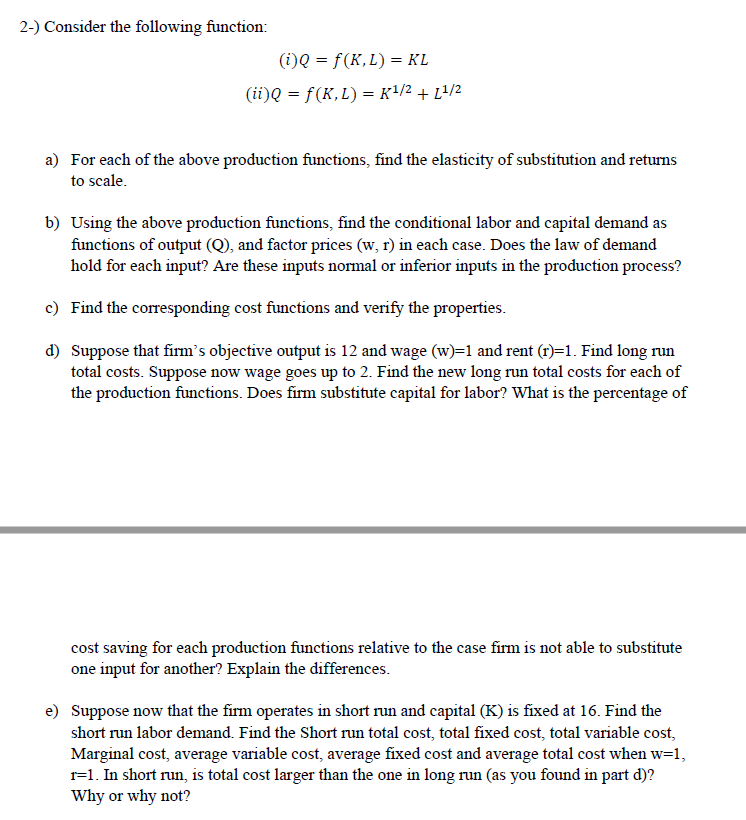
2-) Consider the following function: (i)Q=f(K,L)=KL(ii)Q=f(K,L)=K1/2+L1/2 a) For each of the above production functions, find the elasticity of substitution and returns to scale. b) Using the above production functions, find the conditional labor and capital demand as functions of output (Q), and factor prices (w,r) in each case. Does the law of demand hold for each input? Are these inputs normal or inferior inputs in the production process? c) Find the corresponding cost functions and verify the properties. d) Suppose that firm's objective output is 12 and wage (w)=1 and rent (r)=1. Find long run total costs. Suppose now wage goes up to 2 . Find the new long run total costs for each of the production functions. Does firm substitute capital for labor? What is the percentage of cost saving for each production functions relative to the case firm is not able to substitute one input for another? Explain the differences. e) Suppose now that the firm operates in short run and capital (K) is fixed at 16. Find the short run labor demand. Find the Short run total cost, total fixed cost, total variable cost, Marginal cost, average variable cost, average fixed cost and average total cost when w=1, r=1. In short run, is total cost larger than the one in long run (as you found in part d)? Why or why not? 2-) Consider the following function: (i)Q=f(K,L)=KL(ii)Q=f(K,L)=K1/2+L1/2 a) For each of the above production functions, find the elasticity of substitution and returns to scale. b) Using the above production functions, find the conditional labor and capital demand as functions of output (Q), and factor prices (w,r) in each case. Does the law of demand hold for each input? Are these inputs normal or inferior inputs in the production process? c) Find the corresponding cost functions and verify the properties. d) Suppose that firm's objective output is 12 and wage (w)=1 and rent (r)=1. Find long run total costs. Suppose now wage goes up to 2 . Find the new long run total costs for each of the production functions. Does firm substitute capital for labor? What is the percentage of cost saving for each production functions relative to the case firm is not able to substitute one input for another? Explain the differences. e) Suppose now that the firm operates in short run and capital (K) is fixed at 16. Find the short run labor demand. Find the Short run total cost, total fixed cost, total variable cost, Marginal cost, average variable cost, average fixed cost and average total cost when w=1, r=1. In short run, is total cost larger than the one in long run (as you found in part d)? Why or why not







